Best
Budget-friendly Saxophone
-
Overall: Its Body & Keywork Are Made From High-Quality Gold-Lacquered Brass
-
Best Feature: Includes durable lightweight case with rucksack straps
-
TedScore™: 8/10
Best Overall
Saxophone
-
Overall: Designed With A Gorgeous Gold Lacquer Finish With Engraving
-
Best Feature: Offers bright sound and effortless playability
-
TedScore™: 8.5/10
Best
Beginner
Saxophone
-
Overall: Beautiful Look And Rich Tone With A Gold Lacquer Finish
-
Best Feature: Includes case & high-quality 4C mouthpiece
-
TedScore™: 9/10
Have you ever had a saxophone that sounded like it was whispering secrets instead of playing solid and soulful tunes? I’ve been there, too, and I’ll show you how to get rid of airy sound on your saxophone.
It’s like having a guest at a party with a quiet voice; you know they have stories, but you can’t quite hear them. It was embarrassing, but my saxophone used to sound like it had a bad case of the hiccups.

Can you believe it? Luckily, it’s something we can fix.
I’ll show you some simple changes that will have your saxophone sounding great in no time. Stay with me, and we’ll get rid of that airy sound!
By the end of this article, you’ll have a saxophone that can confidently steal the spotlight. So grab your reed, and let’s make some music that’s clear, strong, and amazing.
Mastering Embouchure and Air Support
Achieving a professional sound on the saxophone relies heavily on perfecting both my embouchure and air support. Let’s dive into the nitty-gritty of fine-tuning these aspects to bid farewell to that airy sound.
Embouchure Techniques

First, the embouchure is about how I position my mouth on the saxophone mouthpiece. Striking the right balance with my lips, teeth, and facial muscles is crucial.
Here’s how:
Top Teeth: Rest them firmly on top of the mouthpiece.
Bottom Lip: Cush the reed with a slight overbite, not too tight or loose.
I swear by long tones to develop my embouchure stability.
I practice holding a single note at a consistent pitch and volume, starting softly and gradually increasing to fortissimo. This strengthens my embouchure and ear.
And remember, patience is key! Developing a solid embouchure that can tackle all those tricky nuances takes time.
Breathing and Air Support Exercises

Breathing is not just about filling my lungs; it’s about controlled, diaphragmatic support. Think of it as powering a windmill—steady and robust to keep those blades turning smoothly.
Breath Control: Place a hand on my belly and take deep breaths, feeling my diaphragm expand.
Support: I use that same diaphragmatic tension to control my air stream as I exhale and play.
I’m a massive fan of going back to basics with breathing exercises. I take a deep breath for four counts, hold for four, exhale for four, and rest for four.
This helps build consistent air support, which is crucial for that clear saxophone tone.
Engaging in these exercises routinely works wonders for my sound. It’s about putting in the effort every day—no shortcuts, I’m afraid!
Reed Selection and Maintenance
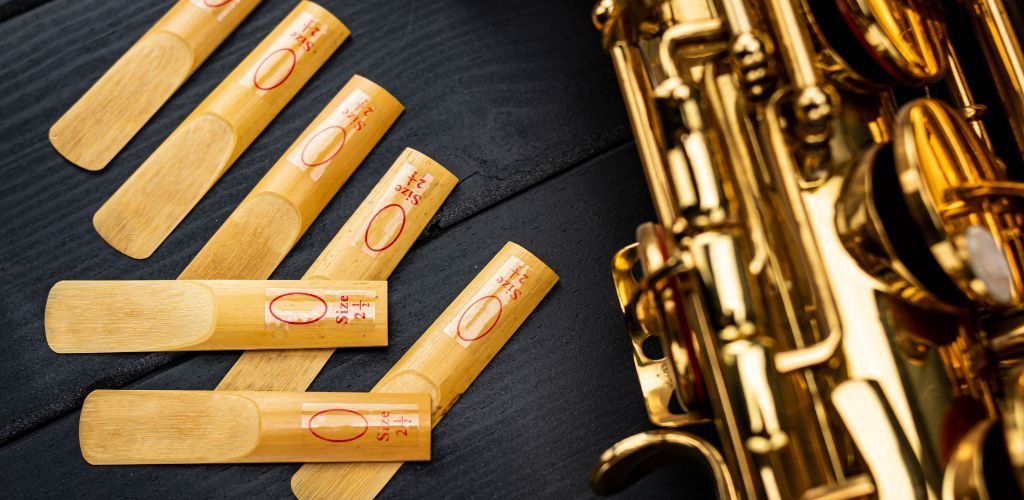
It’s all in the reeds, my friend. Let’s hunker down and chat about how to pick the right one and keep it in tip-top shape.
Choosing the Right Reed Strength
Now, I’m sure we’ve all heard that picking a reed is quite like choosing a good hat—it must fit just right! If it’s too soft, you get a flimsy tone; too hard, and it’s all huff and puff with no payoff.
For beginners, a reed of strength 1.5 to 2 is lovely; it’s forgiving, yet it’ll sing. As for the pro players, anything from 2.5 to 4 means more resistance.
A softer reed often produces a more mellow and smooth sound, while a harder reed may produce a crisp sound.
However, some players have found that using a harder reed can create a harsh sound, whereas a softer reed can contribute to a more forgiving and fluid playing experience.
Don’t shy away from plastic reeds, either.
They can be consistent pals in climates that make cane reeds throw a wobbly. Their strength lasts longer, yet they maintain a jolly good sound.
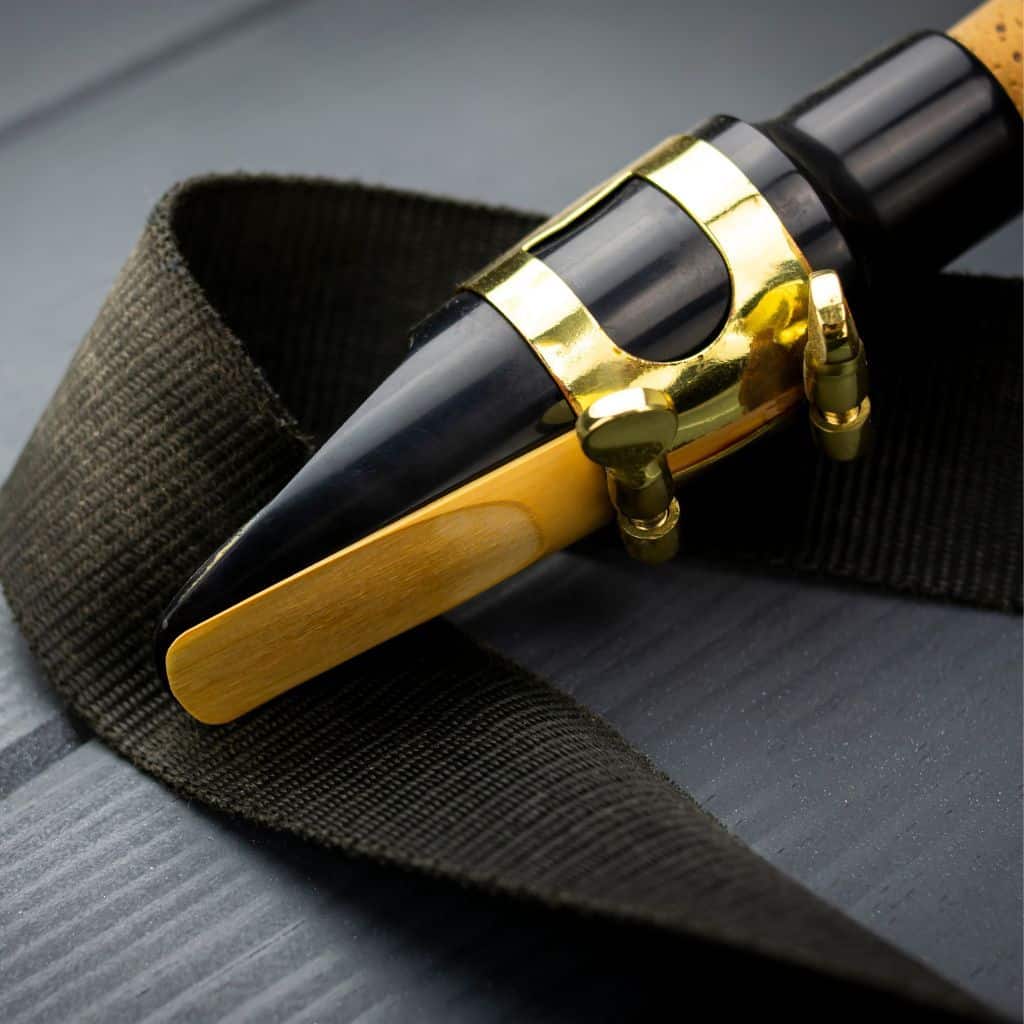
Reed Care and Adjustment
Keeping your reed neither as dry as a biscuit nor as soggy as a sponge is the ticket. A light spritz of water before play keeps dryness at bay and helps avoid the dreaded warp.
A slight scrape here and there for reed modification might bring it back to life. Just a whisper of adjustment can make an old reed belt out like it’s in its prime again.
And let’s not forget storage—pop those reeds in a case where they won’t get all bent out of shape.
It is crucial to keep moisture buildup to a minimum. Give your reed a gentle wipe post-jam to fend off any gunk that wants to make a home there.
Regular reed rotation also extends the life of your collection. A slight reed rotation goes a long way; it’s like giving them a bit of a holiday.
So, there we have it—happy reed, happy life! Keep these bits and bobs in mind; your sax will be singing sweeter than a lark at dawn.
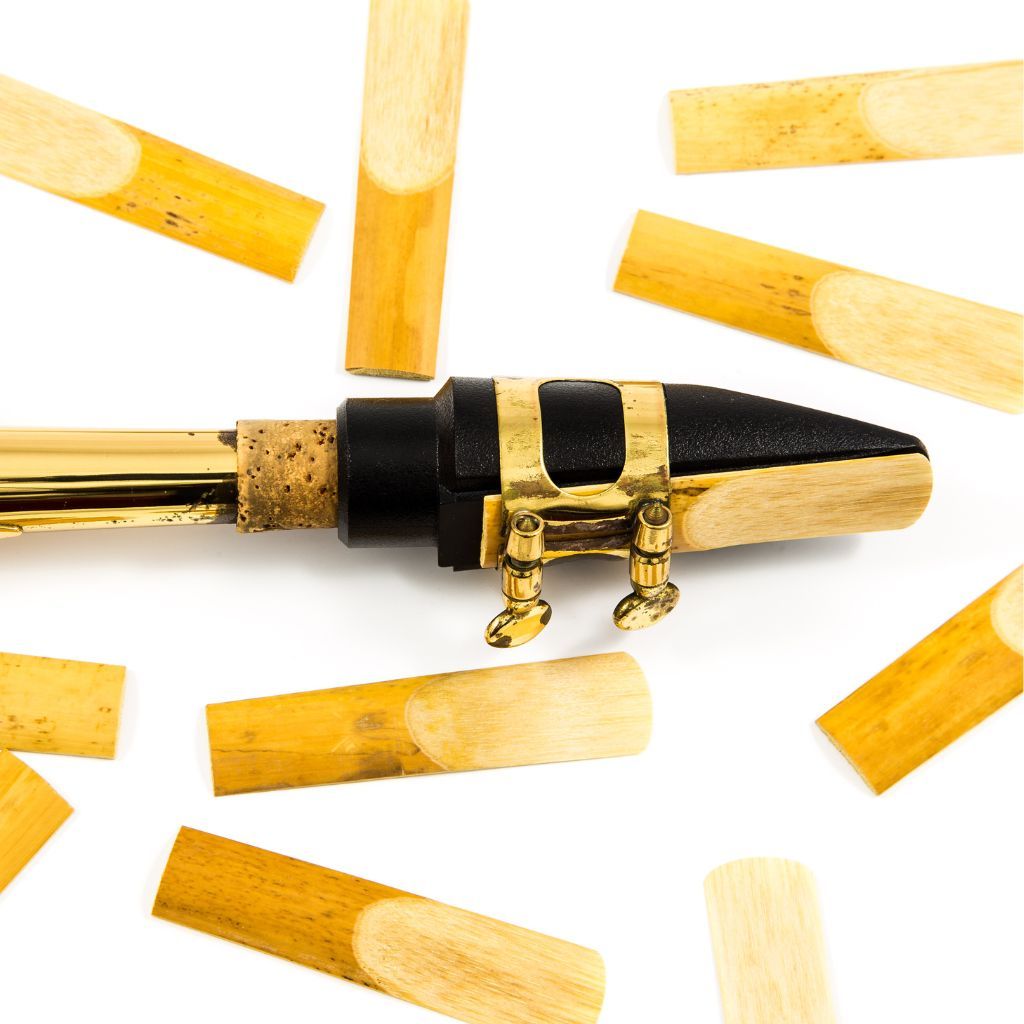
Instrument Check and Troubleshooting
Before we even think about tickling a tune out of our saxophones, let’s ensure our instrument is top-notch.
Navigating leaks and octave mechanism issues with sleuth-like scrutiny and some elbow grease will see us through.
Identifying and Fixing Leaks

Now, if I were a detective looking for why my saxophone sounds like it’s wheezing, I’d first snoop around for leaks.
Grab a leak light and snake it through each section while pressing the keys down. If light escapes where it shouldn’t, you’ve got a leak.
Scoot to your nearest repair shop, and they’ll sort you out. Leaks often crop up around the pesky G# key or those lofty palm keys.
Octave Mechanism and Key Alignment

Trouble with your high notes feeling a tad gossamer? Your octave mechanism may be throwing a tantrum.
A well-behaving octave mechanism is crucial for a clear, clean sound, significantly when scaling the heights of your saxophone’s range. Eyeball it to see if it’s appropriately aligned; a misaligned octave key can be a real party pooper.
If you’re not confident tinkering with it yourself, I suggest hustling it down to the experts at the repair shop. They’re like the saxophone’s fairy godparents!
Understanding Saxophone Sound Production

When I play my saxophone, I know that achieving the perfect sound is all about mastering the subtle balance of its components. Let’s dive right in and look at what makes up that rich, soulful tone we’re all chasing.
Components of Saxophone Tone
A few key elements define my saxophone’s voice. The mouthpiece and reed are stars of the show; together, they act like the vocal cords of my instrument.
I pay special attention to the reed, ensuring it’s not too dry or warped, as it vibrates to create sound waves.
The embouchure, or the way I shape my mouth and apply it to the mouthpiece, adds my unique signature to the tone. It’s like my personal touch on the music I create.
And let’s remember the saxophone itself, a wondrous construction of brass that resonates and amplifies the buzz from the mouthpiece and reed into a full, melodic blast.
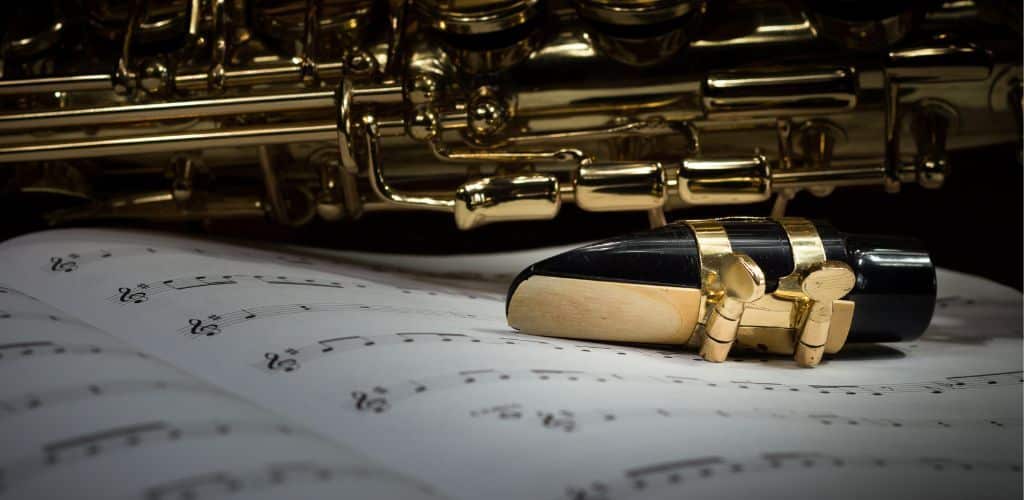

Advanced
Techniques and Tips
Stepping up my game to eliminate that nagging airy sound in my sax has led me to discover some nifty techniques. Let’s jump right in and see how we can give that sax a smoother, richer tone.
Experimenting with Mouthpiece and Ligature
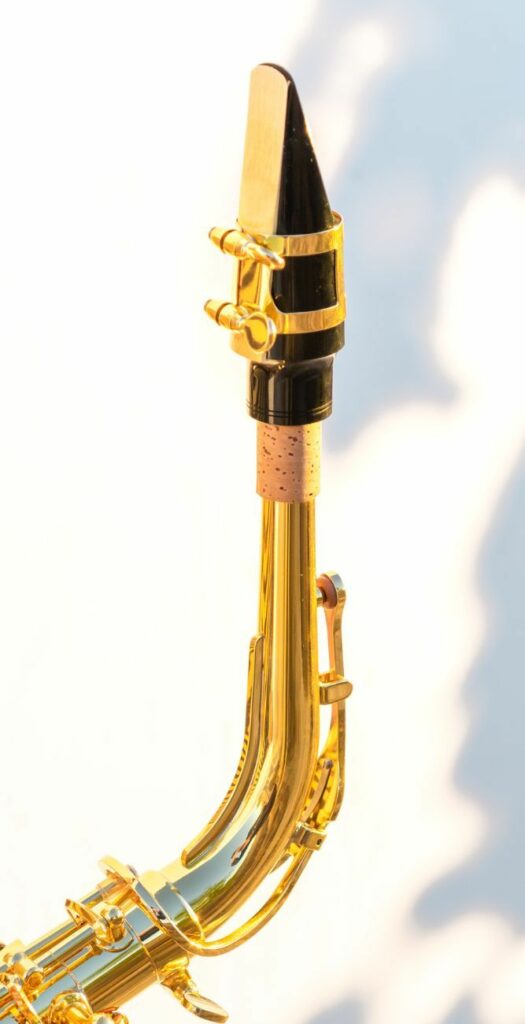
I often find the culprit behind a less-than-ideal sax sound in my mouthpiece and ligature setup.
It’s like a detective game – I experiment with the positioning, ensuring the ligature isn’t too tight or loose.
This allows the reed the freedom it needs to vibrate optimally.
Some saxophone players prefer hard rubber mouthpieces for their warmer and mellow tone, while others favor metal mouthpieces for their brighter and more projecting sound.
However, some players have experienced a spitty sound with metal mouthpieces due to excessive moisture.
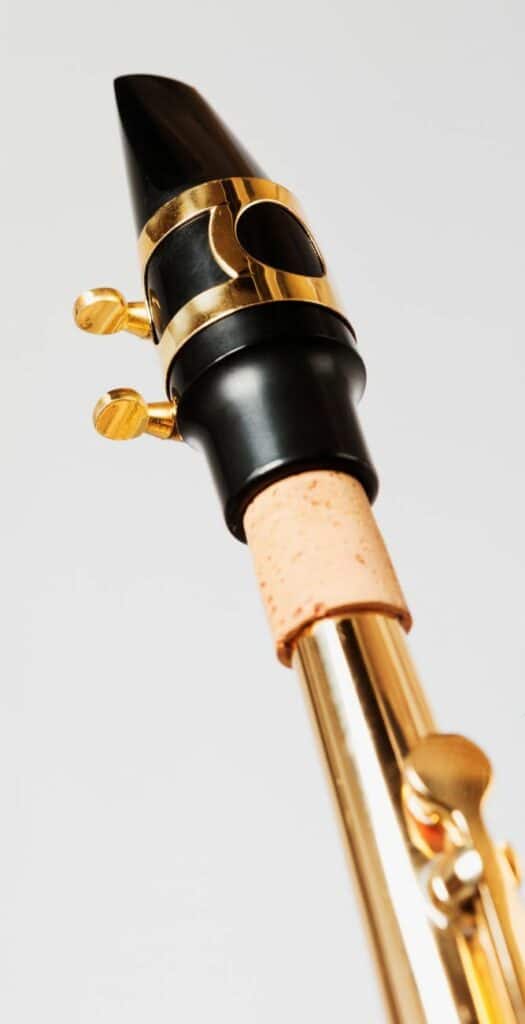
In contrast, hard rubber mouthpieces are often praised for handling moisture more effectively, producing a cleaner sound.
If I feel adventurous, I might swap my ligature out for a different style. Just remember, the placement of the ligature on the mouthpiece can drastically affect the reed’s response.
Considering the Saxophone's Make and Model
Yamaha YAS280 Student Alto Saxophone
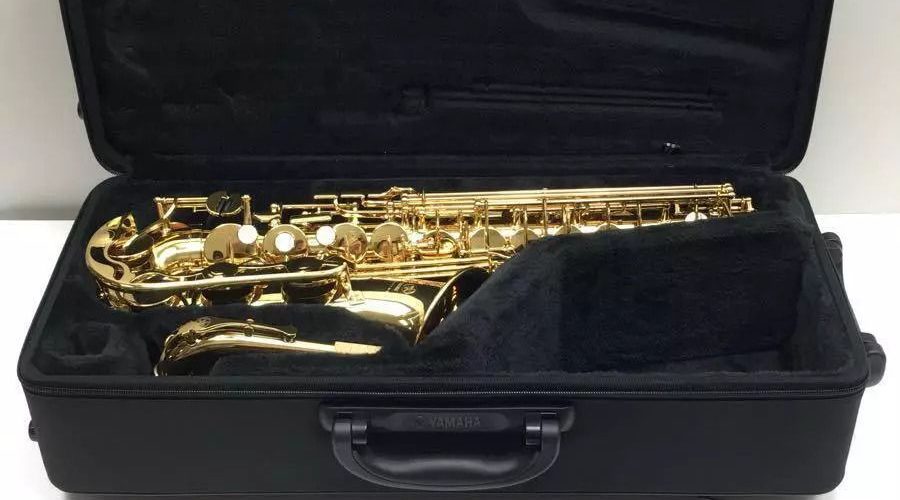
The Yamaha YAS280 Student Alto Saxophone features a lightweight design and an adjustable thumb-rest, providing excellent comfort and playability for beginners.
Its durable construction, precise intonation, and easy response make it an ideal choice for students looking to develop their skills with a reliable and high-quality instrument.
Yamaha YAS280 Student Alto Saxophone

PERFECT FOR: Student saxophone players
FEATURES: Beautiful look and rich tone with a gold lacquer finish
OTHER INFO: Easier response from lower notes with the improved, stronger B-C# mechanism
Yamaha YAS280 Student Alto Saxophone
- Register for a 5-year extended warranty and 3-month Tomplay Premium
- Includes case & high-quality 4C mouthpiece
- Yamaha quality creates the best student saxophone
- You might want to upgrade as you advance your playing skills
When you click ‘Check Price’, you’ll see there are loads of great places to buy this item. Our personal favorite is Sweetwater for the US, and Thomann and Gear4Music for the UK & Europe.
They are the largest music retailers, with excellent customer service, competitive prices, really fast shipping, and the longest guarantees.
The professional musician who wrote this article combined many things,
from the product build, manufacturer’s reputation through to feedback
from other users, to create our famous TedScore™.
Jupiter JAS700 Alto Saxophone
The Jupiter JAS700 Alto Saxophone features a durable brass body and adjustable thumb rest, ensuring comfortable playability and long-lasting performance.
Its precise keywork, excellent intonation, and rich, warm tone make it an ideal choice for advancing students seeking a reliable and high-quality instrument.
Jupiter JAS-700 Alto Sax
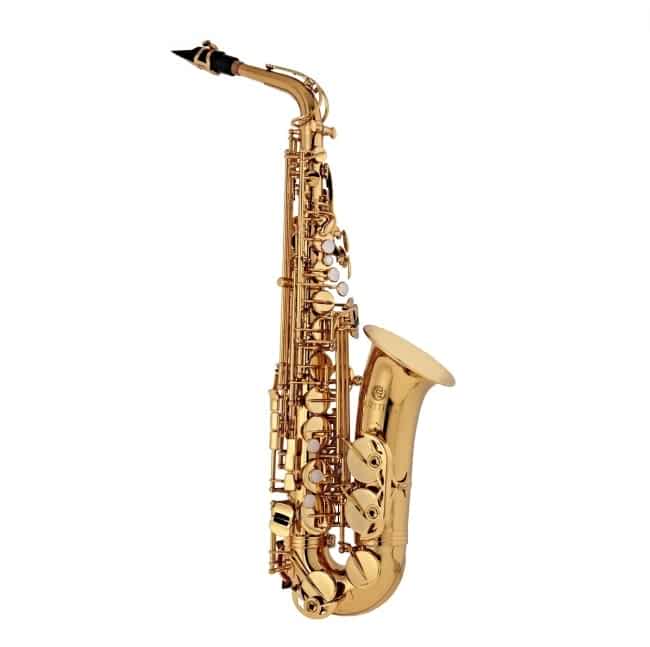
PERFECT FOR: Players up to grade VII standard
FEATURES: Its body & keywork are made from high-quality gold-lacquered brass
OTHER INFO: Excellent sound projection and tone
Jupiter JAS-700 Alto Sax
- Includes durable lightweight case with rucksack straps
- Designed to provide intermediate players with cleaner, fuller sounds
- Some experienced saxophonists may find the sound quality to be lacking compared to higher-end models
When you click ‘Check Price’, you’ll see there are loads of great places to buy this item. Our personal favorite is Sweetwater for the US, and Thomann and Gear4Music for the UK & Europe.
They are the largest music retailers, with excellent customer service, competitive prices, really fast shipping, and the longest guarantees.
The professional musician who wrote this article combined many things,
from the product build, manufacturer’s reputation through to feedback
from other users, to create our famous TedScore™.
Conn-Selmer PAS380 Premiere Alto Saxophone

The Conn-Selmer PAS380 Premiere Alto Saxophone features a robust brass body and professional-grade key mechanisms, providing a rich, resonant tone and smooth, reliable action.
Its ergonomic design and precise intonation make it an excellent choice for advancing students and intermediate players seeking a high-quality, dependable instrument.
Conn-Selmer PAS380 Premiere Alto Saxophone, Lacquer
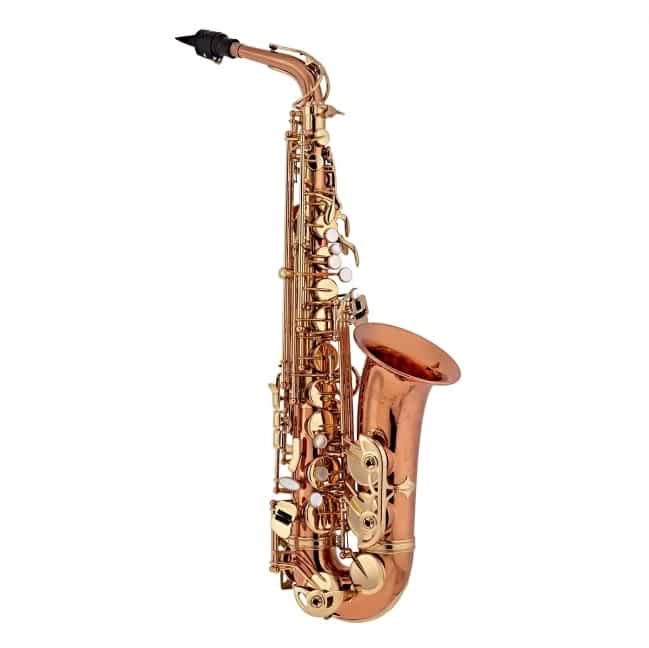
PERFECT FOR: Advancing student saxophone players
FEATURES: Designed with a gorgeous gold lacquer finish with engraving
OTHER INFO: With adjustable mechanisms and keys
Conn-Selmer PAS380 Premiere Alto Saxophone, Lacquer
- Offers bright sound and effortless playability
- Includes Rousseau JDX mouthpiece and Rovner ligature
- Produces a warm and rich sound which can be used for all genres of music
- The vintage unlacquered finish may require more maintenance to keep it looking its best
When you click ‘Check Price’, you’ll see there are loads of great places to buy this item. Our personal favorite is Sweetwater for the US, and Thomann and Gear4Music for the UK & Europe.
They are the largest music retailers, with excellent customer service, competitive prices, really fast shipping, and the longest guarantees.
The professional musician who wrote this article combined many things,
from the product build, manufacturer’s reputation through to feedback
from other users, to create our famous TedScore™.
How to get rid of airy sound on saxophone:
Recap
Checking the reed is a good start; it’s often a cheeky culprit behind that unwanted breeze in my sound. If my reed differs from the bother, a swift inspection of the sax for leaks or damage is next on my list.
After all, maintaining my instrument is as crucial as playing it.
A proper embouchure and consistent airflow can do wonders, too. It can turn those airy whispers into the lush, full tones I crave.
And let’s remember the mouthpiece and ligature; they must be sitting just right.

I’ve learned that practice doesn’t just make perfect; it makes permanent. So when I give my sax some tender love and care and mind my playing habits, that airy sound doesn’t stand a chance.
It’s all about charm, patience, and a sprinkle of know-how.
Remember, every squeak and whoosh is a nudge toward refining my sound. They’re not setbacks but signposts to greatness on my musical map.
So here’s to clear, rich notes and the joy of a saxophone that sings true!
Wait! There’s more…
Explore this article for the best saxophone mouthpiece, providing valuable insights to help you find the best mouthpiece for your saxophone playing needs.
FAQ's
Your saxophone may sound fuzzy due to issues such as air leaks or improper embouchure technique, causing the sound to lack clarity. Checking for leaks and ensuring proper mouthpiece and reed placement is essential to improve the saxophone’s sound quality.
To make your saxophone sound smooth, focus on developing a consistent and controlled airflow while playing, and practice proper embouchure technique to achieve a more refined and fluid sound.
To produce a clear sound on a saxophone, ensure a proper embouchure by forming a firm but relaxed seal around the mouthpiece with your lips. Maintain steady air flow and proper finger positioning to achieve a resonant and clear tone.
A gurgling sound on a saxophone can occur due to excess moisture buildup in the instrument, often in the tone holes or the neck. Ensuring proper swabbing and maintenance after playing can help prevent this issue and maintain a clear sound.











I’ve been struggling with creating a consistent tone, and this section on saxophone sound production is a goldmine. The breakdown of tone components and how each part of the sax contributes is fascinating. Never considered how much the mouthpiece and ligature can influence sound. I’ve been experimenting with a few different setups, and it’s amazing how much of a difference a small change makes. Any recommendations on mouthpieces for jazz? I’m currently on a Yamaha 4C but thinking of upgrading.
For jazz, consider trying out a Meyer mouthpiece. They offer a wide range of tonal colors and are versatile enough for various jazz styles. It’s a significant upgrade from a 4C and might be exactly what you’re looking for.
Meyer’s great, but also check out Vandoren. They have some nice jazz mouthpieces too!
Love the tips for identifying and fixing leaks! Helped my kid’s sax sound so much better. Thanks a bunch!
Regarding reed care and adjustment, I have to disagree with one point. Soaking reeds in water before playing does more harm than good over time. It’s better to properly humidify your reeds to avoid any unnecessary wear or misshaping. What’s your take on this, Hannah? I’ve found that reeds last longer this way.
Just picked up a used sax and was wondering about the best way to start with reed selection. Any tips on finding the right strength for beginners? Cheers for the article, Hannah Haefele, really helps!
Hey, SaxoPhil, start with a strength of 2.5. It’s generally easier for beginners and offers a balance between resistance and ease of play. Experiment from there!